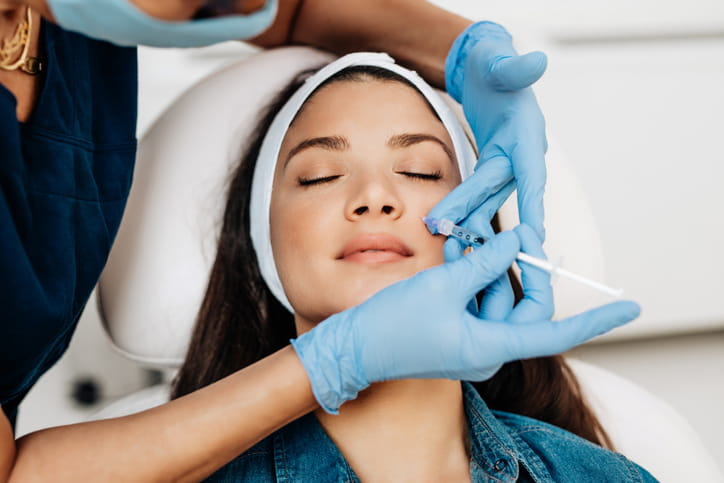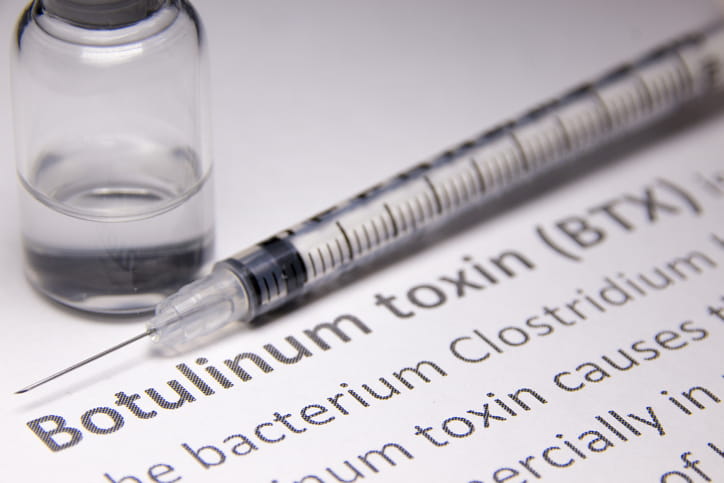Is Botox Safe?

The Bottom Line
Botox, Dysport, and Xeomin injections are popular cosmetic procedures. These injections contain a small amount of botulinum toxin. This is the same toxin that causes botulism, but these products contain much less of the toxin than is needed to cause disease in humans.

What is the cosmetic use of Botox?
Whether you agree with it or not, our society values the appearance and preservation of youth and beauty. In the era of dating apps, Zoom calls, and social media influencers, many people choose to undergo cosmetic surgical procedures to enhance certain features of their natural appearance.
In 2020, over $16 billion were spent on cosmetic procedures in the U.S., and more than 15 million cosmetic procedures were performed. Breast augmentations, breast lifts, and buttock augmentation with fat grafting (“Brazilian Butt Lift” or “BBL”) were among the most popular cosmetic surgical procedures, according to the American Society of Plastic Surgeons. Chemical peels, laser hair removal, and botulinum toxin type A injections, were also popular. These and other minimally invasive cosmetic procedures represent 85% of the total cosmetic procedures performed in 2020. Administration of botulinum toxin type A was the most popular minimally invasive cosmetic procedure performed in the U.S.
Botulinum toxin type A is a specific medical formulation of botulinum toxin. This toxin is produced by several species of Clostridium bacteria, including Clostridium botulinum, which are found throughout our environment. In humans, the toxin binds to nerve cells and prevents the release of certain chemicals that are involved in muscle contraction. In the presence of botulinum toxin, muscle cells are unable to contract, and they become paralyzed. When botulinum toxin type A is injected for cosmetic purposes, this muscle paralysis results in a temporary decrease in wrinkles and frown lines. The medical use of botulinum toxin type A began in the 1940s, when injections of the toxin were used as a treatment for strabismus (crossed eyes). Since then, the toxin has been used to treat muscle spasticity and excessive salivation, in addition to cosmetic conditions. There are several formulations of botulinum toxin type A that are approved by the U.S. Food and Drug Administration (FDA) for cosmetic use, including Botox, Dysport, and Xeomin.
Can Botox cause botulism?
Botulinum toxin is also the cause of botulism, a dangerous and life-threatening disease in humans. Foodborne botulism occurs after the consumption of botulism toxin in foods that have not been processed correctly. This most commonly occurs after ingestion of home-canned foods, as incorrect canning procedures can promote bacterial growth and proliferation. Honey consumption by infants is a recognized cause of infant botulism. Infants’ immature digestive tracts do not effectively destroy the toxin. Since more than half of all honey products contain Clostridium botulinum, infants should not consume honey during their first 12 months. Wound botulism can occur when open sores or cuts are contaminated with Clostridium botulinum bacteria. Intestinal botulism is a rare form of botulism that generally occurs in people with Crohn’s disease or other gastrointestinal illness. All forms of botulism can cause severe symptoms including profound muscle weakness, double vision, and difficulty swallowing. If untreated, the disease can progress to respiratory failure and death. Even with treatment, the signs and symptoms of botulism can last for months and can result in permanent complications. There is an antidote for botulism called botulinum antitoxin. The antitoxin does not reverse muscle paralysis or other symptoms that have already occurred, but it can prevent the development of additional signs or symptoms of the disease.
Botulinum toxin is a very potent poison, and exposure to small amounts of the toxin can cause severe disease in humans. The Centers for Disease Control and Prevention (CDC) considers botulism to be a high-priority bioterrorism agent. Even though botulism exposure is dangerous in small amounts, the doses used for cosmetic procedures are significantly smaller than the amounts needed to cause disease in humans. For this reason, it is extremely rare for people to experience signs and symptoms of botulism after receiving injections of the medical formulations of botulinum toxin.
While reported rarely, botulism can occur in individuals who receive excessively high doses of botulinum toxin type A for medical or cosmetic purposes, as well as those who receive injections of unlicensed products. These unlicensed products are not meant for use in humans and can contain much higher doses of botulinum toxin type A than Botox, Dysport, or Xeomin. Because of this, people should never receive injections of unlicensed botulinum toxin type A products.
What are Botox parties?
“Botox parties” are where a group of people get together in a home or hotel room to get cosmetic injections of botulinum toxin type A. While this might sound like a fun way to look fabulous, there are risks associated with getting injections at such parties. The individuals performing the injections might be inexperienced, or even unlicensed, the product could be counterfeit or not FDA-approved, the environment might not be clean to the standards of a medical office, and there might not be resources available on site if you have a bad reaction to the injection. These parties are illegal in some states.
If you experience adverse or unexpected signs or symptoms after receiving botulinum toxin type A, contact Poison Control immediately for guidance. Help from Poison Control is available at www.poison.org and by phone at 1-800-222-1222. Both options are free, confidential, and available 24 hours a day.
Kelly Johnson-Arbor, MD
Medical Toxicologist
Poisoned?
Call 1-800-222-1222 or
Prevention Tips
- Use search tools provided by the American Society of Plastic Surgeons or the American Academy of Dermatology to find a board-certified and experienced plastic surgeon or dermatologist to perform cosmetic injections of botulinum toxin type A.
- Avoid the use of botulinum toxin type A products that are unlicensed or not approved by the United States Food and Drug Administration (FDA).
- Avoid “Botox parties” where injections are done in homes or hotel rooms. While these parties may be legal (depending on the state), injections should only be performed by trained and licensed medical professionals using FDA-approved products.
- Do not feed honey to infants less than 12 months of age.
This Really Happened
A physician injected botulinum toxin type A into himself and three other patients for cosmetic purposes. The label on the vial indicated that the product was designed for laboratory use only and was not meant for use in humans. Several days later, the doctor and his patients were admitted to a hospital with symptoms of botulism including severe weakness and difficulty breathing. They received botulinum antitoxin, and all recovered after prolonged hospitalizations of up to 104 days. A sample vial of the laboratory-grade botulinum toxin used in the injections was tested and was found to contain enough toxin to kill thousands of humans (from Chertow et al., 2006).For More Information
Botulinum Toxin. American Society of Plastic Surgeons. Accessed August 15, 2023.
References
Nunez K. Are botox parties safe? Healthline. September 8, 2020. Accessed August 15, 2023.
Poisoned?
Call 1-800-222-1222 or
Prevention Tips
- Use search tools provided by the American Society of Plastic Surgeons or the American Academy of Dermatology to find a board-certified and experienced plastic surgeon or dermatologist to perform cosmetic injections of botulinum toxin type A.
- Avoid the use of botulinum toxin type A products that are unlicensed or not approved by the United States Food and Drug Administration (FDA).
- Avoid “Botox parties” where injections are done in homes or hotel rooms. While these parties may be legal (depending on the state), injections should only be performed by trained and licensed medical professionals using FDA-approved products.
- Do not feed honey to infants less than 12 months of age.
